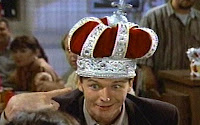There are three aspects of spaceflight that always interest med and I always try to learn more about them; history, traditions, and cultural differences.
The further we go, the more history we have. I believe it to be essential to never forget the beginnings and so looking back 30, 40 or even 50 years is so important to me. Many of us did not witness Vostok-1, Mercury, Gemini or even the Apollo program. Learning about those missions, the women and men working on them, the problems they had to overcome and the solutions they found, is an important part of understanding the present and improving upon the future.
Traditions somewhat tie into the history. Some event triggered the need for a certain tradition. And there are many traditions found in US and Russian Space Flight history.
Cultural differences is another fascinating aspect and I truly believe that over the years these differences have become less and less of a factor. We are adapting, adjusting, learning, and respecting. Will these differences go away someday? I do not think so - I do not hope so. Culture defines who we are and the differences between our cultures, provide wonderful opportunity to reach out and learn.
I would like to tell you about a couple of differences between our US culture and the Russian culture in regards to our training here at Star City.
Exams
Exams in Russia are quite a bit different than I am used to. Nothing is written. A panel of 5-10 people gather with your instructor and over the course of an hour ask questions. I am typically sitting in the front of the room with an interpreter. It feels very formal. They always begin with "tell us about the purpose of this system and it's components" but they often get very detailed quickly. If they find an area where your knowledge is weak, they typically ask many additional questions, which can be somewhat embarrassing. Your instructor takes your performance very personally. If you do well, it reflects well on them. They will quickly jump to your defense if someone asks a question which you haven't been taught. It is really interesting.
Often there will be an expert from the design team (Energia) in the audience which means tougher questions, but you also get direct access to someone building the hardware. The Russians have flown the Soyuz since 1967, but the design is constantly evolving so having them show up is great access to
the most current information.
Hand-shake
At the first greeting of the day with someone, you must shake their hand. But, never shake hands through a doorway...this is bad luck. Always walk into the room first and then shake their hand. And if you are wearing gloves, you must take them off first. And if you pass that person later in the day it is impolite to shake their hand again.
Whistling Inside
It is also bad luck to whistle inside, which I had a hard time getting used to.
It is also bad luck to whistle inside, which I had a hard time getting used to.
People are very superstitious here. Before an exam, they don’t wish each other “luck” because that would bring bad luck - instead they say “no tar, no feathers” (Ни пуха ни пера) – and the response is “go to hell” or more nicely, “go to see the devil.” (К чёрту). The picture here on this entry is what you will find if you googled the first comment. Fitting, don't you think?







































